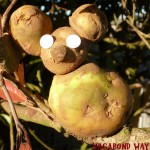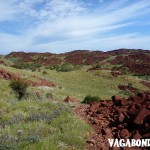I stood quiet and said nothing. I wondered if everybody around me could tell my entire mind was turning circles – everything I previously thought seemed to be wrong. How could this be? I have had an image in my mind my entire life and all of sudden I am finding out I am mistaken? Never to my knowledge have I misidentified a kangaroo until right then. I was learning that Australia had so many different types of kangaroos.
Before moving to Australia when it came to identifying kangaroos, I would have placed myself in a top percentile of people able to do this fairly confidently. First off, I knew their country of origin was Australia, (and bonus points – I could find Australia on a map), I knew that they hopped, they are both a mammal and a marsupial, they have a pouch, their front legs are shorter than their back legs and that their babies are called joeys. I thought I was doing pretty good.
Shortly after arriving in Australia I’m looking out in a field at the animal I thought was a kangaroo. I was reading an information board and it told me this animal was a wallaby. What’s a wallaby and why does it look so much like a kangaroo? I continue reading and I see an identification picture of a wallaroo. What’s a wallaroo and why does it look so much like a kangaroo and a wallaby? Further down the board, I learned about the pademelon. It looks so cute. Why does it look like a smaller combination of a kangaroo, wallaby and wallaroo? Ok, none of these other animals have ever been mentioned in the colouring books I had as a child or general discussions I had about Australian wildlife prior to this point. Indeed, most discussions about Australian wildlife always seem to be overshadowed by the sheer numbers of creatures that have the ability to kill a person in a matter of minutes.
We needed an animal identification book.
So began a collection of animal ID books to form a mini library in our van. We started learning about this whole continent of macropods, a word derived from the Greek, meaning “big foot” mammals. The classification only gets more detailed as one differentiates between the family, group, sub-species, East or West species and so on. Both a good read and informative is Tim Flannery’s book, Country: A Continent, a Scientist & Kangaroo if you are keen to learn more.
For us, as we drove more than 40,000 kilometers or 24,854 miles around Australia, we set out to see for ourselves, what, exactly is the difference between kangaroos, pademelons, wallabies, wallaroo’s and whole bunch of other animals. Here is a selection of some of the mammals that either are, or at least look like a kangaroo.

Ah- the classic red kangaroo. This is what my childhood knew, I could ID these guys. Adult red kangaroo males are the largest marsupials on the planet and have been known to reach up to two meters or six feet seven inches and weigh up to ninety kilograms or 119 pounds.
This is a photo of a field of red kangaroos and is an excellent example of why animal identification can be maddening in Australia. It is not uncommon for “colours to vary with season and location.” Not to mention male, female, immature, breeding, non-breeding can all affect how the same animal may look different at times. When our van broke down in Kununurra for a few weeks, (yes – a few weeks), we had the chance to hang around with two people who were also passionate about animal identification and would have lengthy discussions about how much “colour variation” existed for certain species.
These are two young Eastern Grey Kangaroos practicing their fighting. The Eastern Grey is one of the most commonly seen kangaroos.
Found along the East side of the continent, here we have a swamp wallaby. They have fewer chromosomes (who can tell that by just looking?) and are more diurnal, meaning they browse for food during the day more often than other wallaby’s.
Inhabiting the Eastern range, this stocky fella is the Red Neck Wallaby.
We saw these two Eastern Grey Kangaroos when we did a three day coastal hike. The large, oblong ears with white fringed hair are one of the distinctive ways to ID the species.
We were enjoying the antics of the two Eastern Grey Kangaroos above when all of a sudden we hear this splashing and caught this one coming to join them. He just splashed threw the water with so much ease and once it got too deep he swam across the channel splashing his way up the sand bank on the other side.
Threatened and endangered, we were so excited to find this yellow-footed rock-wallaby. The largest of the rock-wallaby’s, their attractive coat caused this species to be heavily exploited in the 19th century. When you can find these camouflaged animals in their habitat, the long, banded tail is their most distinctive feature.
Australians love their roos and they love big things at road side stops. Rooey II was found to delight travellers crossing the Nullarbor.
Ok, this is not the most flattering picture, but this picture shows the big feet of a quokka. The next two pictures show how cute they are. You can find tons of these little guys on Rottnest Island.
See how cute they are?
Oh, so cute, all cuddled up in a little ball.
Having a look through piles of sea weed on the beach, this is the Western Grey Kangaroo. Although superficially similar to the Eastern Grey Kangaroo, Western Grey Kangaroos usually have thicker coats and are darker brown in colour.
We almost missed this common wallaroo who blended in so well watching us from the other side of a river. Look at those big ears.
The Black-footed Rock-wallaby has mastered the ability to live on cliff edges. We sat high on an adjacent cliff across the water for hours as we watched these guys maneuver so quickly up and down these cliffs. People would come walking up, see us looking across the water at the cliffs and ask us what we were doing. We would point to the rock-wallabies and they would basically say, “Who, what, where?” Then we’d share our binoculars all continue admiring these animals doing their thing on this giant cliff face.
Notice how long their tails are. The tails are extremely strong and aid in balance.
This shy and beautiful little gal was the Agile wallaby.
Amazingly soft, this is a slighty different sub-species of the Black-footed Rock-wallaby than seen in the previous pictures.
We were able to enjoy a close encounter in a structured environment with these wallabies.
Very shy, small and quick, this is a Red-necked pademelon.
Climbing his way high into the canopy, this is the Lumholtz’s Tree-kangaroo.
Talk about diversity!!! This is still a kangaroo, just a tree kangaroo. They spend most of their time living in trees.
We think tree kangaroos are just about one of the coolest animals ever.Their listing ranges from rare to threatened as they need healthy forest to sustain them for the long term.

We watched these tree kangaroos next to this lovely elderly couple. The husband had survived cancer and they were out to make the most of any time they had left. As darkness came and the temperature dropped, we exchanged contact details and the man’s hands were shaking from the cold so bad I didn’t know if he’d be able to write down his email. We all wanted to stay as long as possible to watch these roos, who fortunately for us were extremely active as we watched them with darkness descending on us.
Looking out across a field at a wallaby and learning I was incorrect in thinking it was a kangaroo is why I love to travel. Before Australia I didn’t even know some of these amazingly unique animals existed, and now they have become apart my of world. Just as much as travel makes my world larger, it also makes it smaller. I constantly realize how little I know and how much greatness there is. I live to be shown this over and over again. Now, after all these new animals we have seen and experienced, I still feel similar to as I did at the beginning of this story. I would say, rather confidently, that I could identify a kangaroo.
Need a little more planning?
The
gear listed in this post is the same exact gear we use to travel the world or our back yard.
These same
booking resources are the same exact ones we use to find deals and acquire points for more travel.
I will never recommend to get a credit card unless you are 100% solid to pay it off in full every month. If you will and are going to be making some big purchases,
this Chase card is the same exact card we use and it offers great travel points and perks.
Finally, if you have not used AirBnB before,
use this special link to sign up and get $40 off your first booking.




.jpg&container=blogger&gadget=a&rewriteMime=image%2F*)








.jpg&container=blogger&gadget=a&rewriteMime=image%2F*)




.jpg&container=blogger&gadget=a&rewriteMime=image%2F*)





 Previous Post
Previous Post Next Post
Next Post
Who would of thought that kangaroos have those long, strong tails for climbing through the rocks. I always thought they had those tails just for being really good at boxing. I will have to re-think things.
After seeing kangaroos in action, their tails are so strong, they use them so much for balance and coordination.
…FANTASTIC introduction into the diversity of kagaroos!!! More than I ever imagined! I’m guessing you really had to be searching to find all these…
Yes- a lot more kangaroos than we ever imagined as well. Just amazing.